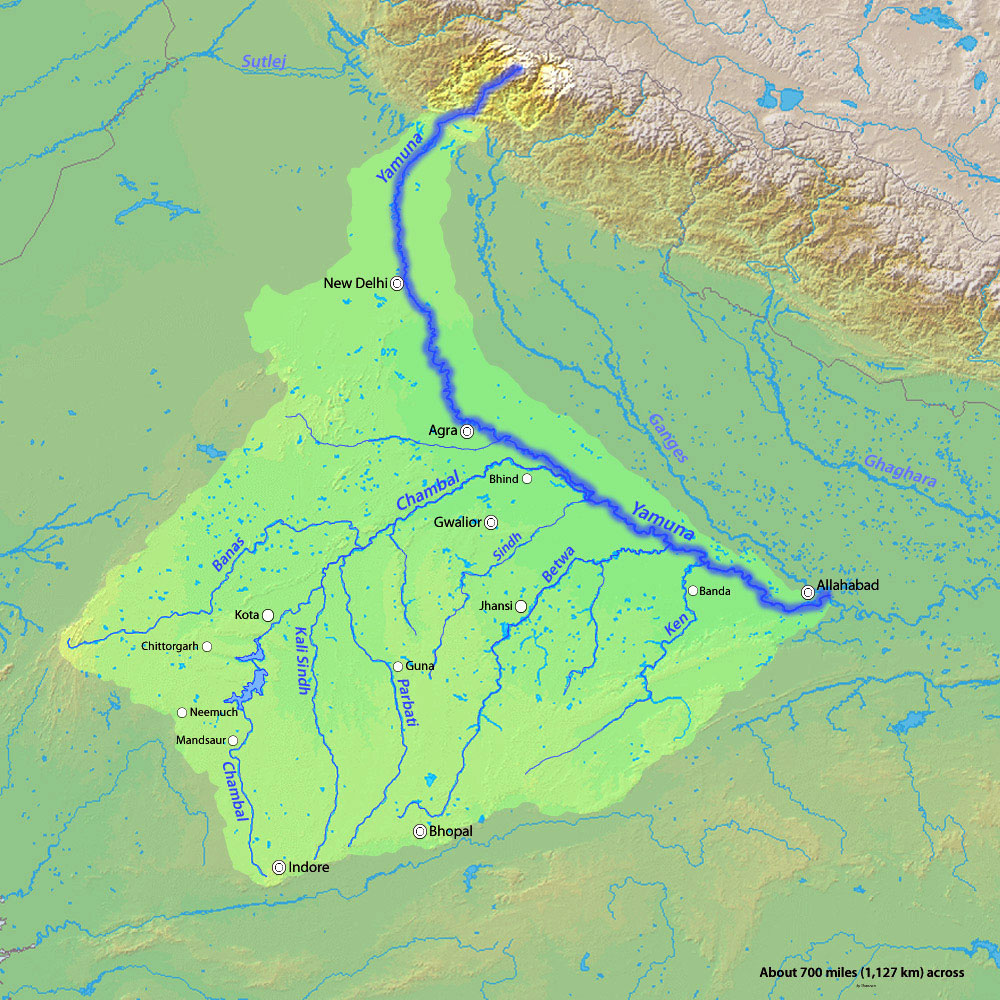Rising Water Levels in the Yamuna River | 15 Jul 2023
Why in News?
Delhi is currently experiencing a severe waterlogging crisis due to the rising water levels of the Yamuna River. The water level has surged to 208.13 meters, marking the highest recorded level since 1963.
What is the Cause and Impact of Increasing Water Level of Yamuna?
- Cause:
- Recent heavy rainfall in upstream states like Himachal Pradesh, Uttarakhand, Haryana, and Punjab are believed to be the main cause of the rising Yamuna River level.
- The Hathnikund barrage in Haryana, responsible for regulating the flow of the Yamuna into Delhi, has released a substantial amount of water due to the rainfall.
- Impact:
- The increased water level of the Yamuna has resulted in flooding in low-lying areas of Delhi, affecting a significant number of people and disrupting transportation and water supply.
- Water supply in Delhi is also impacted as Delhi government decided to cut down supply by 25% following the closure of three water treatment plants due to the rising level of the Yamuna.
Yamuna River
- About: The Yamuna River is one of the major tributaries of the Ganges in Northern India.
- It forms an integral part of the Yamuna-Ganga Plain, one of the world's most extensive alluvial plains.
- Source: It has its source in the Yamunotri Glacier at an elevation of 6,387 meters on the southwestern sides of Banderpooch crests in the lower Himalayan ranges.
- Basin: It meets the Ganges at the Sangam (where Kumbh mela is held) in Prayagraj, Uttar Pradesh after flowing through Uttarakhand, Himachal Pradesh, Haryana and Delhi.
- Important Dam: Lakhwar-Vyasi Dam (Uttarakhand), Tajewala Barrage Dam (Haryana) etc.
- Important Tributaries: Chambal, Sindh, Betwa and Ken.
- Government Initiatives Related to Yamuna River:
- Yamuna Action Plan
- Delhi Government’s Six-Point Action Plan to Clean Yamuna by February 2025

